Simply put, Voile’s Switchback X2 isn’t just the more powerful sibling of Voile’s popular Switchback binding, it expands the range of performance at both ends of the spectrum – turning and touring.
As a result, there is little if anything to dislike about the X2. True, it is a tad heavier than a Switchback, but the trade off for power that drives fatties like heavier bindings do for a mere 2 ounces more per foot than the Switchback is undeniably reasonable. By comparison the closest binding with equal power (BD’s O1) weighs 4 ounces more per foot.Due to the inherent advantages of a free-pivot while skinning the differences in weight tend to dissolve. However, the propensity for icing up by any other telemark binding than either of the Switch brothers makes the X2 a binding that demands a closer look by anyone who telemarks.
In three years the number of times I’ve had a Switchback give me trouble changing modes due to ice build up can be counted on one hand, and for the X2 it never happened over the course of a dozen tours this past year. By comparison, the O1 that I was testing simultaneously iced up abut 20% of the time.
Durability has been improved a notch as well. The toe plate remains stainless steel with a unitary, wrap-around design. With the cable pivot point moved further back, more stresses will ensue so Voile increase the radii at all the bends to reduce the opportunity for cracking and inevitable failure. This change applies to the regular Switchback as well.
The most uncanny part of this binding is how strong it feels for a binding that does not have the cable routed underfoot. Until the X2 came along it seemed clear that the most powerful tele bindings all had a cable system that was routed underfoot. The natural conclusion was that side-routed cable bindings simply can’t deliver that level of power.
According to all the bench tests that have been performed to document the forces involved in a telemark system the tension in the cable system is fairly similar among all cable bindings when the heel of the boot is raised 20° or more. The differences lie in the first ten degrees of heel lift, and side-routed cable systems simply have a slower rate of increase than underfoot cables.
Indeed, on a bench test it may be revealed that the X2, like the Switchback, is slow to engage. However, it wasn’t obvious while skiing. The only thing I noticed was that the X2 continues to provide a smooth engagement which is an absolute delight in softer snow. Surprisingly though, it feels like it responds just as quickly as underfoot versions. A friend on the least coast commented that, “it lets your boot flex where it wants to flex, at the bellows.”So the final result is fast turn initiation, and one that doesn’t try to force your boot to flex where it wasn’t meant to flex. Perhaps that is why it felt like it engaged smoothly.
As ever, the mode switch is easy to use, and reliable. The only problem with it is finding the thin, pear-shaped metal ring as it hides under an inevitable layer of snow. But, once you get the tip of your ski pole in the steel ring, the spring enhanced switch moves super easily left to tour or right to turn. Just remember “righty tighty” for skiing, “lefty loosey” for skinning.
Part of the reason the Switchback bindings are resistant to icing up is how the wrap-around stainless steel toeplate is positioned around a toe riser plate. Every other free-pivoting binding pivots above, and the action of walking causes snow to get packed between the toe plate and the surface below. By wrapping the toe plate around the riser block, snow tends to get scraped off with every step, not packed down. In addition, the prongs that hold down the locking bar at the rear get recessed inside the toe riser while touring, so they are not even available to become coated with ice. The result is a virtual absence of icing up and consequent mode switch problems. While others are fussing with locking their toe for turns, you can be making first tracks.
A very unexpected improvement in the X2 over the standard Switchback is a larger free-pivot range of motion, a solid 60° – YMMV. Turns out that after changing the radii of the various bends, the wedge is tighter so your boot will not extend as far at the front. After closer inspection it turns out a mere 2mm difference in the front edge of the duckbill can allow another 5°–10° of rotation. So, there’s a bit of fuzziness on the ROM, but you can probably count on more than 55° even with a bumper of ice that may build up on the reinforcing ribs around the axle. Either way, a nice improvement that affects the standard Switchback as well.
To accompany Voile’s legendary, hassle-free touring function the heel post sports two climbing pegs at 55mm or 75mm above flat, which are mounted at either end of the plastic block. Contrary to my view of the Switchback heel post, the current heel post system works beautifully. The geometry of the sidewalls on the post have been revised so that the climbing wires lift with your ski poles to about 30° with hardly any resistance, and then add enough resistance that you need to give a firm tug with your ski pole to get ’em to latch upright. A nice improvement which is now standard for all Voile bindings.One of the beauties of Voile’s heel post system is the use of a slot which allows you to easily adjust its position. When you get it set right the rear of the block provides a nice lip that allows you to latch the heel lever of the cable assembly under it so it doesn’t flop around in transit.
Is there anything not to like about Voile’s Switchback X2? Only if you insist on having even more power. It is not the most powerful binding on the market, nor does it claim to be, but the X2 is hardly neutral either. That and like most other telemark bindings, it is not releasable.
It offers plenty of power, especially for backcountry worthy skis. If you ride obese planks you have issues the X2 wasn’t meant to help you with. For everyone else, what’s not to like about an excellent mix of low weight, hassle free touring, durability and more than enough power? Go get some!
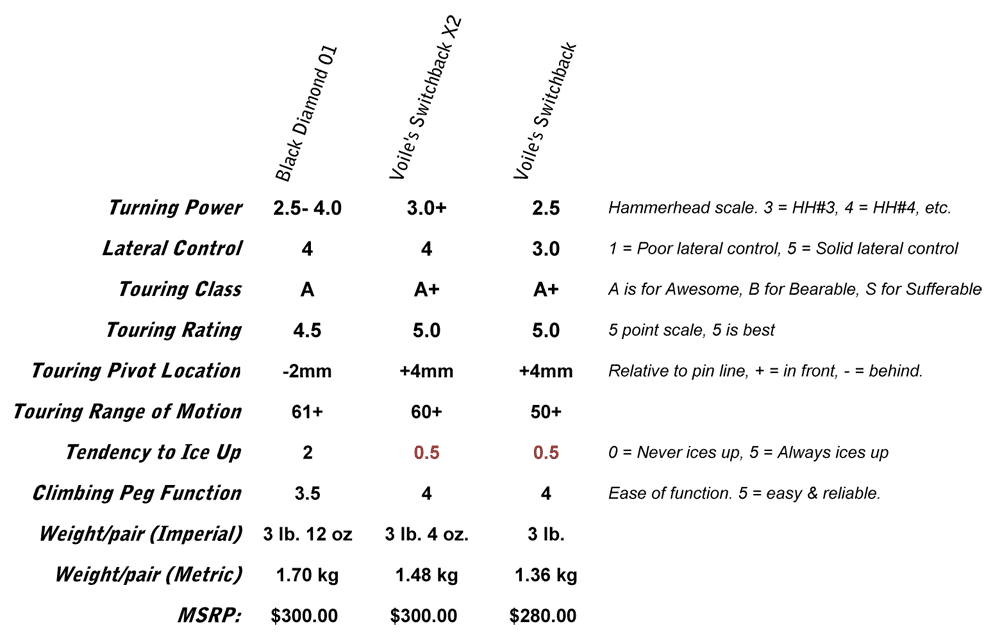
Voile
Switchback X2
MSRP: $299
Weight: 26 oz/ binding (0.74 kg/ binding), 3 lbs., 4 oz. /pair (1.48 kg/pr)
Size range (mondo): 27 – 31 (mondo) with standard cable bars
24 – 26.5 (mondo) with short cable bars
Optional crampons available.
Related Posts:
Comparing BD’s O1 to Voile’s Switchback X2
Jenn’s view too, of Switchback X2
© 2011

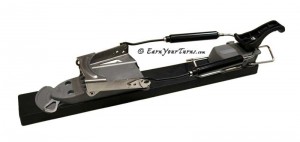
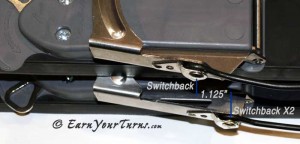
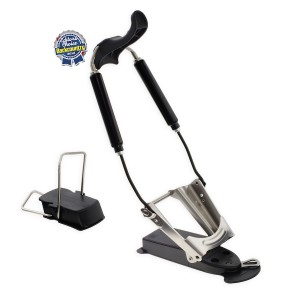
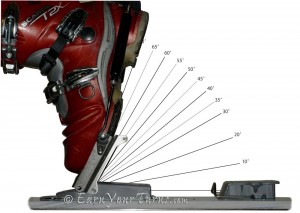
4 comments
5 pings
Skip to comment form
Are the spring cartridges the same as the regular Switchback? It seems that if Voile moved the pivot point back then the cartridges might need longer travel. Either that, or the springs will bottom out earlier. Also, are the springs the same stiffness as before?
Author
The springs are 25% stiffer, but not any longer.
I’am Giorgio, a telemarker from Italy. I would like to know Dostie’s opinion about this set: skis 85mm waisted skisScarpa T2 Swicthback X2Or is better Switchback “X1”?Thank you so much!
@disqus_KkMsS7YUoi:disqus,In my experience you don’t need a binding with a lot of tension (more active, more powerful, etc.) to help with controlling your skis until the width of the skis goes above 90mm. So for your rig, with a waist width of 85mm the original Voile Switchback should be enough. Above 90mm I’d recommend the Switchback X2, and above 105mm I’d recommend 22D’s AXL or G3’s Enzo for 75mm style boots.
With NTN the only option you have to moderate the power quotient is to use the Freedom for narrower skis although it works pretty good with fatties too. See the Binding Selection Chart for a graphical representation of this see: https://www.earnyourturns.com/13176/telemark-binding-selection-chart/
[…] X2 review on Earn Your Turns – Dostie’s much more detailed and technical review Share this:TwitterEmailFacebookRedditLinkedInLike this:LikeBe the first to like this post. from → skiing, telemark ← Dreaming of snow African Groundnut Stew → No comments yet […]
[…] your current 75mm boots stick with 75mm options like O1, Axl, Enzo, RT Spike, Switchback or the X2 version, and if you must have a safety release, 7tm Power […]
[…] Not much new in tele. Axl is mature and solid, so are the Switchback brothers, and BD’s O1. All decent choices and now joined by G3′s Enzo which lived up to […]
[…] Voile Switchback X2 […]
[…] Binding, Voile SwitchBack Or on Earn Your Turns […]